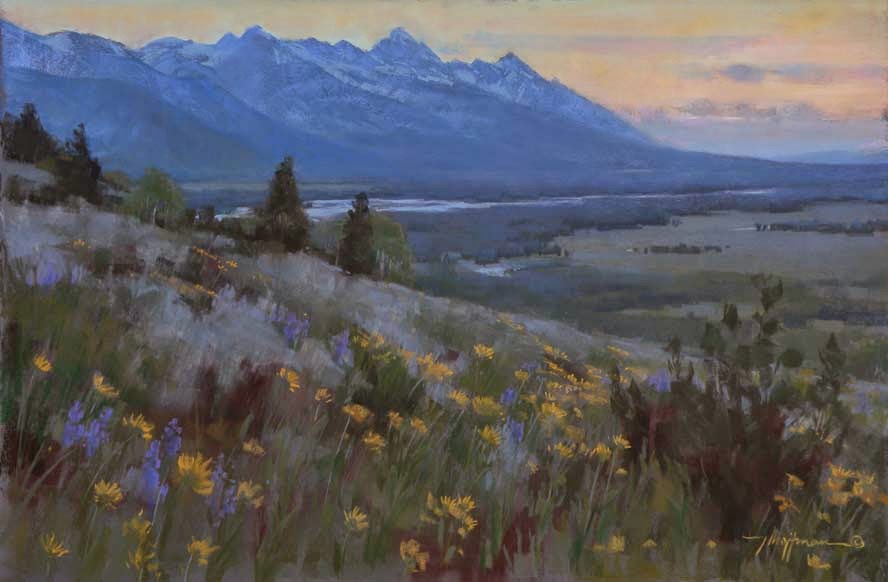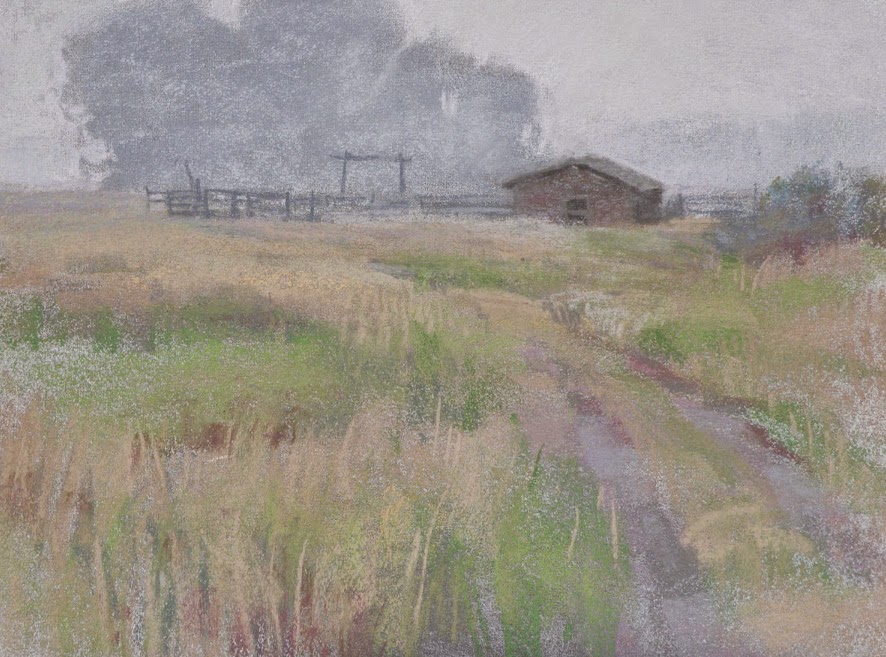 |
| It is very easy to see value in a drawing, as the entire image is created with only black, white, and shades of gray. Behind the Clouds, charcoal on paper, private collection, © Jennifer L. Hoffman. |
There are some great quotes out there about value in painting.* Here's one, oft-repeated by artists, attribution unknown:
"Value does all the work; color gets all the glory."
Or this one, from the author of Design and Expression in the Visual Arts, John F. A. Taylor:
"There are painters... who know how to dispense with hues and saturations. There is no painting which can dispense with values."
Or this gem from Harley Brown:
"In painting, as in life, you can get away with a lot as long as you have your values right."
 |
| There are many similar values in this pastel. |
 |
| Evening Song, pastel on board, 20x30, available. © Jennifer L. Hoffman. |
A number of common problems in paintings can be directly attributed to value errors. Ned provided me with an "Aha!" moment just as Lougheed had done for him decades before, when he made this observation while watching me struggle with a plein air study: "If you can't seem to get your values light enough, you probably aren't painting your darks dark enough." Whoa. That one cracked my head wide open! It made so much sense, but I had never realized it. Another example of a value problem is something often bemoaned by beginning artists - muddy color. A muddy color is just a grayed color of the wrong value (and/or temperature - see Kathryn's post on color for more on the concept of temperature).
So how does an artist determine correct values in a subject? Values are in fact a set of relationships. Determining the darkest dark in a composition and the lightest light is a great starting point. And one of the best ways to see general values is to do something you've heard mentioned on this blog before. SQUINT. Squinting at a subject eliminates unnecessary detail and simplifies the main information. In general, the darkest darks will be found in the center of interest of your composition, or in the foreground of a landscape (this is a rule of thumb - many artists have purposefully and successfully broken that rule). Once the darkest dark and lightest light have been determined, the values of other elements in the subject can be determined through comparison. Using thumbnail sketches helps to map out the most important value areas and to determine the value relationships throughout the composition.
 | ||
| The darkest darks are in the cast shadows beneath the eggs in this painting. | |
 |
| Four Eggs, pastel on mounted paper, 9x12, available. © Jennifer L. Hoffman. |
 |
| A close value range in this pastel creates an introspective, quiet mood. |
 |
Whisper, pastel on board, 11x14, available. © Jennifer L. Hoffman. |
Likewise, paintings painted in the lower scale of the value range are called "low key" paintings, where the lightest light might be a middle gray. Paintings with subtle value shifts and close value ranges communicate a different feeling than those with big contrasts. All of these choices reflect the artistic voice of the image maker.
 |
| Value contrasts create a sense of sun and shade. |
 |
| A Worn Path, pastel on mounted paper, 20x16, available. © Jennifer L. Hoffman. |
I leave you with a quote from the great master, John Singer Sargent:
"Color is an inborn gift, but appreciation of value is merely training of the eye, which everyone ought to be able to acquire."
When you are out and about in the world, take a moment to squint. See if you can find the darkest dark and lightest light in the view you see. Do the same when you look at art. The more you practice, the easier it becomes. Sargent would be proud of you.
_____________________________________
*A great source for quotes on all manner of art topics can be found on Robert Genn's fantastic website: www.art-quotes.com



















